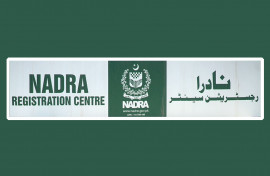
The withdrawal of American forces from Afghanistan is going to be completed before the cut-off date of September 11, 2021. Already a chaotic situation is emerging in which the receding forces are looking for new ways to maintain old alliances and ensure their footprints in the region. An uncertainty is sweeping across Afghanistan which can impact the whole region if the peace process fails to bring the key protagonists on a negotiating table. The United States military withdrawal is leaving behind different types of remnants which will keep defining the relationship between the US and Afghanistan. The complex association calculus can only be solved through a sustainable economic and military assistance to maintain an effective counter-Taliban force in the country. History tells us that Mujahideen factions failed to overthrow Kabul despite Soviet withdrawal in 1989, as the latter continued assisting Kabul and held its influence over local warlords during the period.
The US may not be able to transport back all its war equipment as the cost surpasses its utility. So, the Pentagon is handing over less sensitive equipment to local Afghan security establishment along with the military bases in key Afghan cities. The Americans are also reaching out to neighbouring countries to strike some sort of a deal for its military equipment which may fetch it unexpected dividends in material or non-material terms. There is a possibility that the equipment handed over to Afghan security forces might end up in the hands of Taliban fighters. Therefore, in the absence of any guarantees, military gadgets which might not pose any significant challenge to Kabul will be doled out to local Afghan forces.
There are legitimate concerns over the presence of security contractors in the country. Though the US announced a military withdrawal, it has not given any timeframe for private security officials working in the country. The latter have established connections with local Afghan networks and forged close bonds with the war lords for mutual benefits. How these assets are used in coming months through an indirect or direct approach will be interesting to see. It may result in a private contractor job boom in the country. All indications suggest that private military contractors may try to plug in the vacuum left behind by US withdrawal. They can prolong their stay in the country through an independent or coordinated approach against Taliban forces in Afghanistan. They may try to maintain their human capital through financial means so that such local forces can be utilised against the Taliban onslaught. They will maintain a close liaison with US military so that any aerial assistance required might be readily available through a swift mechanism. For this purpose, it is essential that the US air force deploys its aerial CT forces at flexible platforms in the region. Such an arrangement would support on-ground contractors or their assets in case of an emergency. The National Directorate of Security (NDS) in Afghanistan will maintain close intelligence coordination with the US and seek assistance from the contractors and US air force in case of any eventuality.
The Islamic State (IS), though suffered greatly in the last one year or so, is still making spikes of violence in selective areas of the country. The group may not dissipate instantaneously as the main protagonists in the future turbulence can utilise their services for certain objectives. The group along with other anti-Taliban violent groups may also act as a catalyst to prolong the period of disturbance to maintain a constant pressure on forces of the regional countries. It may also entice one or more regional actors to participate in the Afghan turbulence which can have serious repercussions for the internal security of these countries.
Thus, the remnants of US withdrawal will play a critical role in the future regional security and stability.




















COMMENTS
Comments are moderated and generally will be posted if they are on-topic and not abusive.
For more information, please see our Comments FAQ